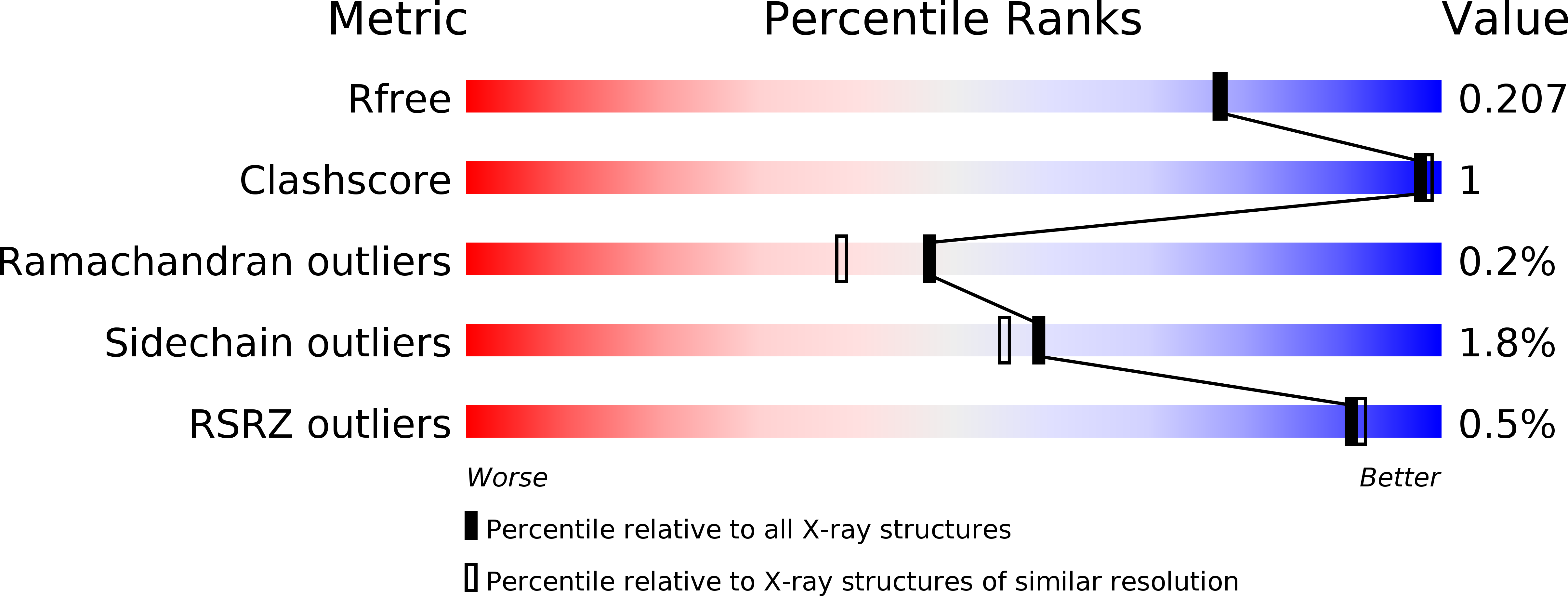
Deposition Date
2016-04-13
Release Date
2017-05-24
Last Version Date
2024-01-10
Entry Detail
PDB ID:
5G2T
Keywords:
Title:
BT1596 in complex with its substrate 4,5 unsaturated uronic acid alpha 1,4 D-Glucosamine-2-N, 6-O-disulfate
Biological Source:
Source Organism:
BACTEROIDES THETAIOTAOMICRON (Taxon ID: 226186)
Host Organism:
Method Details:
Experimental Method:
Resolution:
1.90 Å
R-Value Free:
0.19
R-Value Work:
0.16
R-Value Observed:
0.16
Space Group:
P 1 21 1


